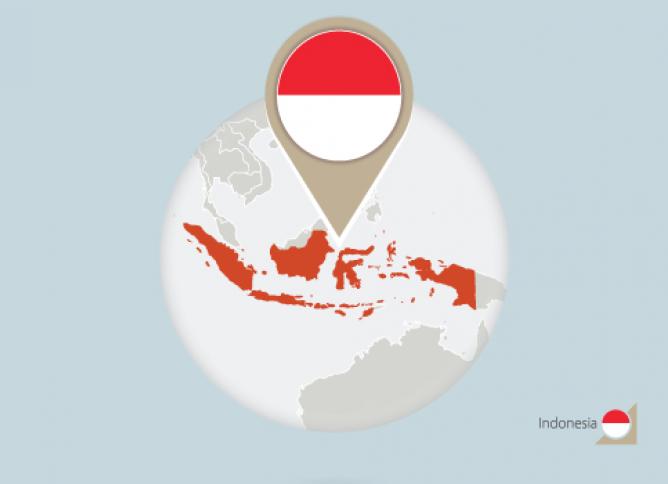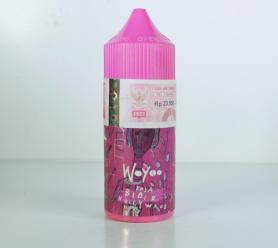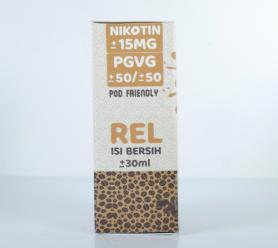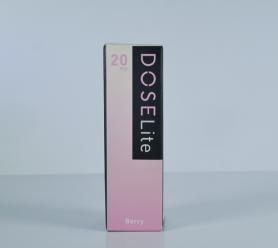Indonesia

Project and Country Background
Indonesia has a population of 273.5 million people; as of 2020, 62.9 percent of the adult male population and 4.8 percent of the adult female population smoke cigarettes, 38.3 percent of the male youth population and 2.4 percent of the female youth population smoke tobacco products.1 An estimated 246,359 people in Indonesia die each year from diseases caused by smoking.2
TPackSS worked with in-country collaborators to purchase tobacco products from three major cities in Indonesia. In 2013 and 2015, we purchased cigarettes and kreteks in Jakarta, Surabaya, and Semarang; while in 2022, we added nicotine pouches, heated tobacco products (HTP), and electronic cigarettes (e-cigarettes) to the products we aimed to purchase from Jakarta, Surabaya, and Medan. We replaced Semarang with Medan because the latter had a larger population size and higher smoking prevalence. Within each city, packs were collected from a sample of 12 economically and socially diverse neighborhoods. Data collectors purchased one of every unique pack available from vendors selected in each neighborhood. From November 12 to November 23, 2013, data collectors purchased 215 unique cigarette and kretek packs. Then from November 15 to November 27, 2015, data collectors purchased 253 unique cigarette and kretek packs. In the most recent data collection, from September 12 to September 24, 2022, data collectors purchased 314 unique cigarette and kretek packs, 12 unique HTP packs, 26 unique disposable e-cigarettes, 17 unique pre-filled pods, and 782 unique e-cigarette liquid packs.
The tobacco packaging and labeling requirements in effect at the time of data collection were used to assess each tobacco pack’s compliance with the requirements.
Suggested Citation for Information on this Page: Tobacco Pack Surveillance System (TPackSS). Indonesia: Project and Country Background. Baltimore, MD: Johns Hopkins Bloomberg School of Public Health. http://globaltobaccocontrol.org/tpackss/country/indonesia [Insert Last Updated Date].
Just like other consumer products, tobacco packaging should be regulated so the consumer knows what they are going to buy, use, and the effects and risks of it.Dr. Kartono MohamadTCSC-IAKMI Director (2012-2017)
Browse packs from Indonesia
Indonesia
2022
Indonesia
2022
Indonesia
2022
Indonesia
2022
Indonesia
2022
Indonesia
2015
Indonesia
2022
Indonesia
2022
Highlights of Packaging and Labeling Requirements by Data Collection Year
| Data collection dates | Type of warning | Warning label size and layout | Number of warnings to be displayed | Rotation | Rules for misleading descriptors | Other warning label requirements considered during coding |
|---|---|---|---|---|---|---|
|
Nov. 12 to Nov. 23, 2013 [215 unique packs collected] |
Text |
Warnings must be “easily seen and read” and appear on the “wide side of the package”
|
1 |
None |
None |
Warning text: black with a white background and black border at least 1 mm thick; at least 3 mm in height. |
|
Nov. 15 to Nov. 27, 2015 [253 unique packs collected] |
Picture and Text |
40% of front, 40% of back
|
5 |
All labels displayed concurrently and are intended to be changed every 2 years |
Some restrictions |
Tax stamp may not be placed where it may conceal health warnings. Pictorial warning to be on the top of the front and back of pack. Warning text: white on a black background; capital letters; “PERINGATAN” in 10 point font. |
|
Sep. 12 to Sep. 24, 2022 [314 unique kretek and cigarette packs collected] |
Picture and Text |
40% of front, 40% of back
|
5 |
All labels displayed concurrently and are intended to be changed every 2 years |
Some restrictions |
Tax stamp may not be placed where it may conceal health warnings. Pictorial warning to be on the top of the front and back of pack. Warning text: white on a black background and in capital letters (“PERINGATAN”). |
|
Sep. 12 to Sep. 24, 2022 [12 unique HTP packs and 825 unique e- cigarette packs collected] |
None |
None
|
None |
None |
None |
None |
Tobacco packaging and labeling in Indonesia is regulated under Government Regulation PP No. 19 of 2003 PP No. 81 of 1999. Regulation of the Health Minister of the Republic of Indonesia No. 28 of 2013 Concerning Health Warnings and Health Information on Tobacco Product Packaging contains the implementing details for pictorial health warnings. Regulation of the Health Minister of the Republic of Indonesia No. 56 of 2017 Concerning Amendments to Regulation No. 28 of 2013 Concerning the Application of Health Warnings and Health Information to Tobacco Product Packaging amended Regulation No. 28 of 2013 Concerning the Application of Health Warnings and Health Information to Tobacco Product Packaging.3 The new regulation amends some definitions of key terms and provides the next set of pictorial health warnings.







